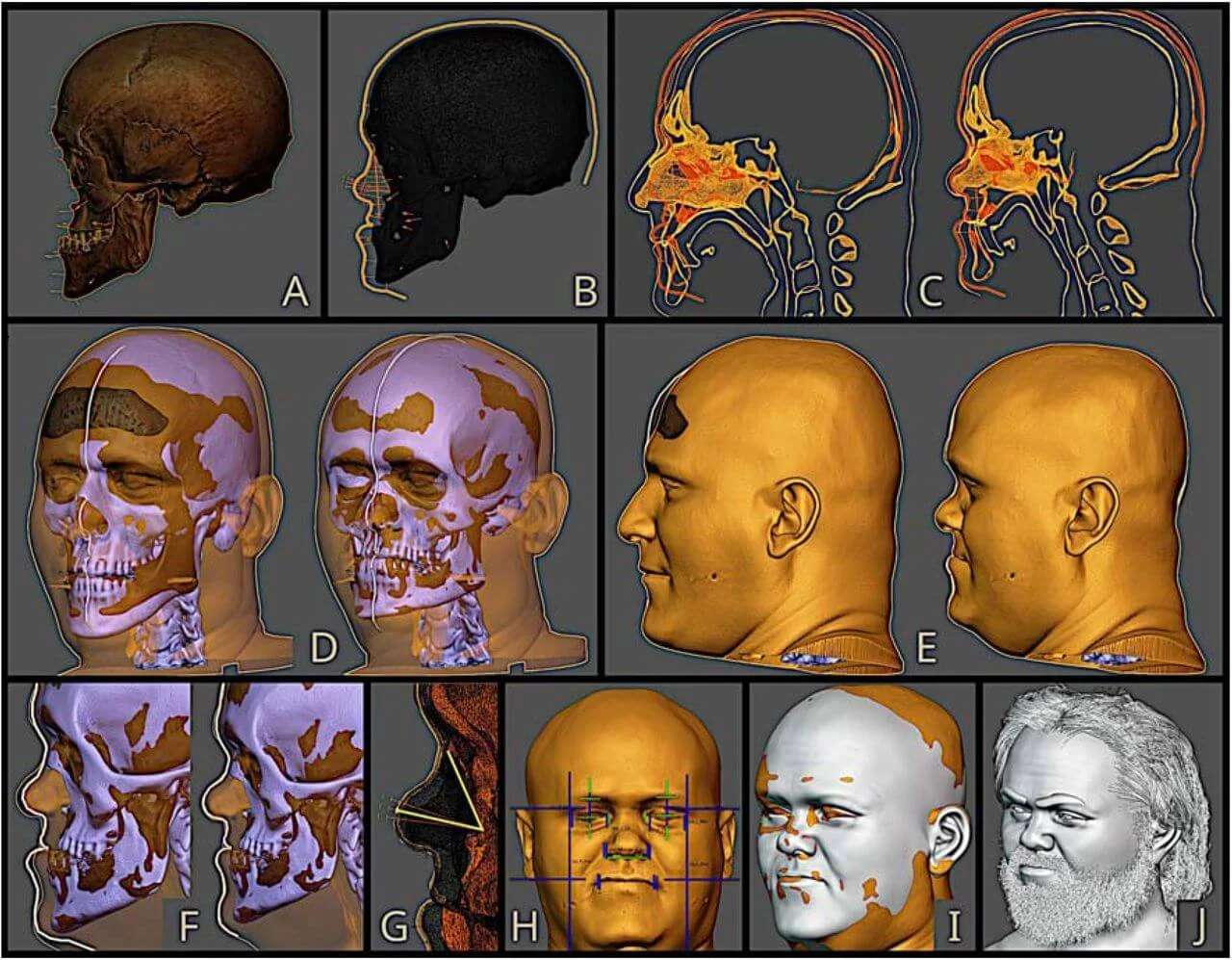BY THE ARCHAEOLOGIST EDITOR GROUP
Facial approximation is a fascinating field that involves reconstructing the facial appearance of individuals from skeletal remains. It has applications in forensics, paleoanthropology, and archaeology, allowing us to better understand the appearance of people from different eras.
One recent breakthrough in this field has been the recreation of the face of a medieval individual suffering from achondroplasia, a rare genetic disorder resulting in dwarfism. This groundbreaking study, conducted by Cicero Moraes, Marta Krenz-Niedbała, Sylwia Łukasik, and Camilo Serrano Prada, provides an invaluable glimpse into the past.
Achondroplasia: A Rare Genetic Disorder
Achondroplasia, also known as achondroplastic dwarfism, is the most common form of skeletal dysplasia and results from genetically determined abnormal cartilage formation. It is a congenital, hereditary, and familial disease with an autosomal dominant mode of inheritance.
While it occurs worldwide, its prevalence can vary by region. For instance, in modern European populations, the birth prevalence is approximately 3.5 per 100,000 individuals. However, in specific regions, such as Wielkopolska in Poland, where the individual in this study originated, the prevalence is higher at 4.47 per 100,000 births.
The most noticeable characteristic of achondroplasia is reduced body height. Adult males with achondroplasia typically have an average height of 130 cm, significantly shorter than the average for unaffected individuals. Other clinical features include disproportionately short limbs relative to the trunk, kyphosis (curvature of the spine), joint hypermobility, and unique facial characteristics such as a large and robust skull with frontal bossing and a depressed nasal bridge.
Discovered by archaeologists in a cemetery in the small village of Łekno last year, scientists turned to Brazilian 3D graphics specialist Cicero Moraes. Cicreo Moraes
Recreating the Face of an Achondroplastic Dwarf
The groundbreaking aspect of this study lies in the recreation of the face of an individual with achondroplasia who lived in medieval Central Europe between the 9th and 11th centuries AD. This facial approximation is a world-first, shedding light on the appearance of individuals with hereditary conditions in the past.
The process of facial approximation involved several steps, beginning with the creation of 3D models of the skull of the individual known as 3/66/90, who had been buried in Łekno, Poland. These models were created using high-resolution 3D scanning technology, providing detailed geometry and texture for the skull. To recreate the face, a unique approach was taken, involving the use of soft tissue thickness markers placed on the skull, representing 31 anatomical points.
These markers served as a guide for the facial reconstruction process. The nose projection, in particular, presented challenges due to variations in available methods. However, through anatomical deformation techniques and comparisons with computed tomography (CT) data, a plausible nose projection was achieved.
Once the facial features were established, including the mandibular prognathism characteristic of achondroplasia, hair features were added to humanize the reconstruction. This step allowed for better recognition by the general population.
The team created two models, one showing the man with hair and a beard and the other of him without hair. Cicreo Moraes
Uniqueness of the Achondroplastic Dwarf Reconstruction
What makes this facial reconstruction particularly significant is its reliance on statistical data extracted from living individuals. While traditional facial approximation methods can be subject to interpretation and variation, this computerized approach is based on objective measurements and statistical averages, making it a more consistent and reliable method.
Additionally, the study's cranial measurements of the achondroplastic dwarf were compared to those of unaffected individuals, demonstrating marked differences. The endocranial volume of the dwarf was notably larger than the average for modern humans, as were soft-tissue head circumference measurements. These findings emphasize the distinct cranial characteristics associated with achondroplasia.
The forensic facial approximation of the medieval achondroplastic dwarf from Central Europe is a remarkable achievement in the fields of anthropology and archaeology. It offers valuable insights into the appearance of individuals with hereditary conditions in the past. By using advanced technology and statistical data, the study demonstrates the potential to recreate the faces of historical figures who had unique skeletal features.
This groundbreaking work not only contributes to our understanding of human diversity but also highlights the power of interdisciplinary research, combining anthropology, osteology, anatomy, computer science, and archaeology to bring the past to life. As more studies are conducted in this direction, we can expect to gain even deeper insights into the lives and appearances of individuals from various historical periods and with different medical conditions.








